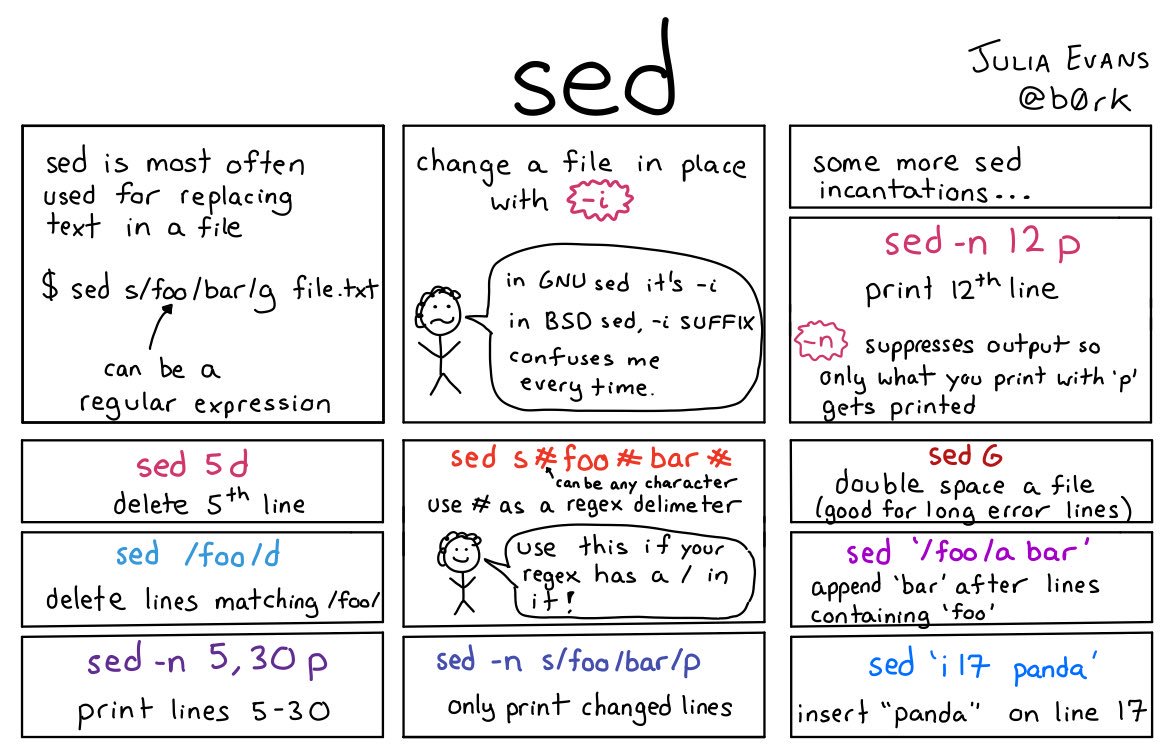String manipulation with sed and grep
What is string manipulation and why do we care about this? As biologists, or more generally as people interested in working with data, a lot of what we want to do will require us to manipulate many characters at the same time. By definition:
- A character is class whose instances can hold a single character value.
- A string is an immutable class for working with multiple characters.
Strings are information that we don’t want to use for numerical calculations. DNA sequences, column or row names, and categorical/qualitative data values will generally be strings. You might want to remove the primers from a lot (like a lot) of sequences at the same time, or you might want to remove whitespaces from a dataset you found online. Most of our string manipulation is covered by the previous links that are tied in with the for loops - here are a couple of useful comics for some of those commands though. ‘awk’ is in some ways is its own programming language - it’s very much worth learning, despite being a bit more complicated than sed or grep. 

 https://www.hackerearth.com/practice/algorithms/string-algorithm/basics-of-string-manipulation/tutorial/ https://pythonforbiologists.com/printing-and-manipulating-text/
https://www.hackerearth.com/practice/algorithms/string-algorithm/basics-of-string-manipulation/tutorial/ https://pythonforbiologists.com/printing-and-manipulating-text/